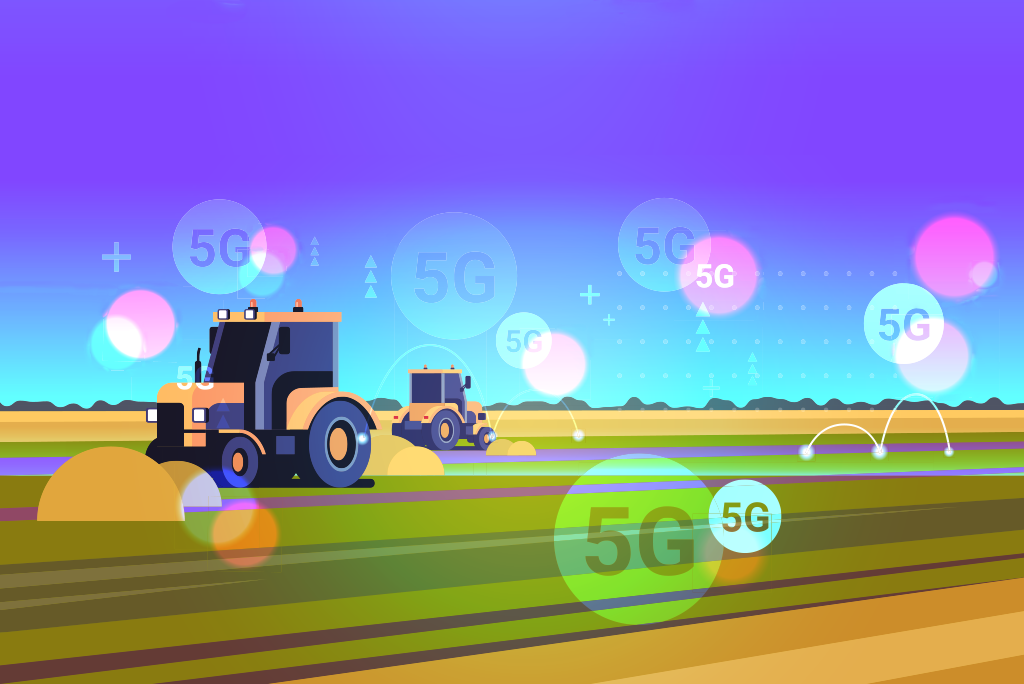
Next generation 5G networks are estimated to deliver at least ten times the speeds of current 4G networks. These lightning-fast speeds would revolutionize the internet by allowing for dramatically faster downloads. When 5G is fully deployed, it is expected to transform entire industries including transportation, healthcare, and manufacturing.
However, the full roll out of 5G networks is expected to take years, since the infrastructure needed to support it—known as “cell sites”—takes time and money to construct. 5G depends on a high-band spectrum, which is easily impeded by obstacles like buildings, especially over long distances. In cities, where antennas can be fixed closely together on buildings and roadside infrastructure, cell sites are relatively easy to build. Suburban and rural areas will face more difficulty with this process because infrastructure is more spread out. Until there is a solution, 5G is expected to only work in urban areas at speeds slightly faster than 4G.
Networks are struggling to find solutions to this dilemma. For example, T-Mobile has used lower frequency airwaves that can easily permeate obstacles over wide regions. However, these low-band spectrum networks have download speeds that are only 20% better than current 4G networks.
Three Companies Claim Major Breakthrough in Delivering 5G to Rural and Suburban Areas
In September, regional carrier U.S. Cellular, telecommunications provider Ericsson, and tech company Qualcomm announced they used a commercial millimeter wave 5G network to make a data call that traveled over 5 kilometers, or 3.1 miles—the longest distance on record. According to a press release, it represents the “first extended range 5G NR millimeter Wave (mmWave) data call in the U.S.” The call was made in Janesville, Wisconsin with speeds greater than 100Mbps, using a Qualcomm QTM527-based fixed 5G broadband modem and Ericsson 5G network hardware. The companies claim that the call transforms the perception that 5G is only possible in high-density, urban areas.
“This milestone demonstrates that mmWave can help close the ‘connectivity divide’ and expand broadband services throughout rural, suburban, and urban communities,” the press release states. “This breakthrough gives communications service providers a cost effective way to expand their coverage and deliver 5G experience to communities that previously were not serviced or may have lacked a reliable connection.”
The discovery may be a game-changer for rural schools, hospitals, and towns that have traditionally been left out by wireless providers due to the high costs of delivering wireless technology in rural regions. However, it will take at least a few years for U.S. Cellular to roll out the hardware required to support 5G. Regardless, the experiment is likely to renew hope that 5G has the power to revolutionize the internet.
“Since the same technology is available to other carriers, it’s highly likely to fuel new confidence in mmWave’s possibilities within the U.S., as well as elsewhere in the world,” writes Jeremy Horwitz in Venture Beat.
Europe Behind Other Regions in Deploying 5G
Meanwhile in Europe, the world’s top 55 telecommunications companies recently reported that 5G deployment is lagging behind other regions. 4G network deployment in the continent was already slow. In 2019, just 70% of European cell phone users were on 4G networks, compared with about 90% in China, the U.S., and South Korea. In order to catch up, European countries would need to construct more cell towers. However, international disputes, regulatory delays, and local resistance to constructing 5G antennas in many towns and cities has hindered the process.
Understanding 5G Networks
As technology evolves toward 5G, it’s vital for technical professionals and industry leaders to understand how to deliver on the 5G vision while meeting consumer demand for higher communication speeds. Prepare your team with 5G Networks, a three-course program from IEEE and Nokia.
Connect with an IEEE Content Specialist today to learn more about the program.
Interested in learning more about 5G for yourself? Visit the IEEE Learning Network today!
Resources
Michaels, Daniel. (18 September 2020). Europe Is Falling Behind on 5G Rollout, Top Companies Warn. Wall Street Journal.
Press Release. (17 September 2020). Ericsson, Qualcomm and U.S. Cellular achieve extended-range 5G data call over mmWave. Ericsson.com.
Horwitz, Jeremy. (17 September 2020). U.S. Cellular claims record-breaking 5G mmWave data call spanning 5km. VentureBeat.


[…] 5G networks pose challenges for local communities. In order to deliver the lightning-fast internet speeds promised of 5G networks, “cell sites” […]